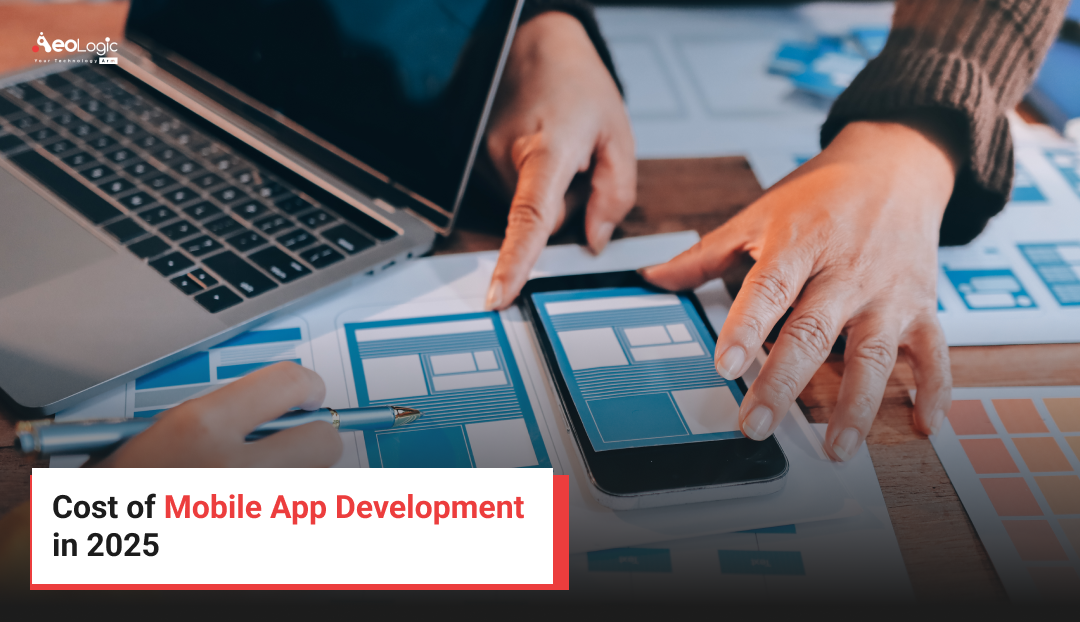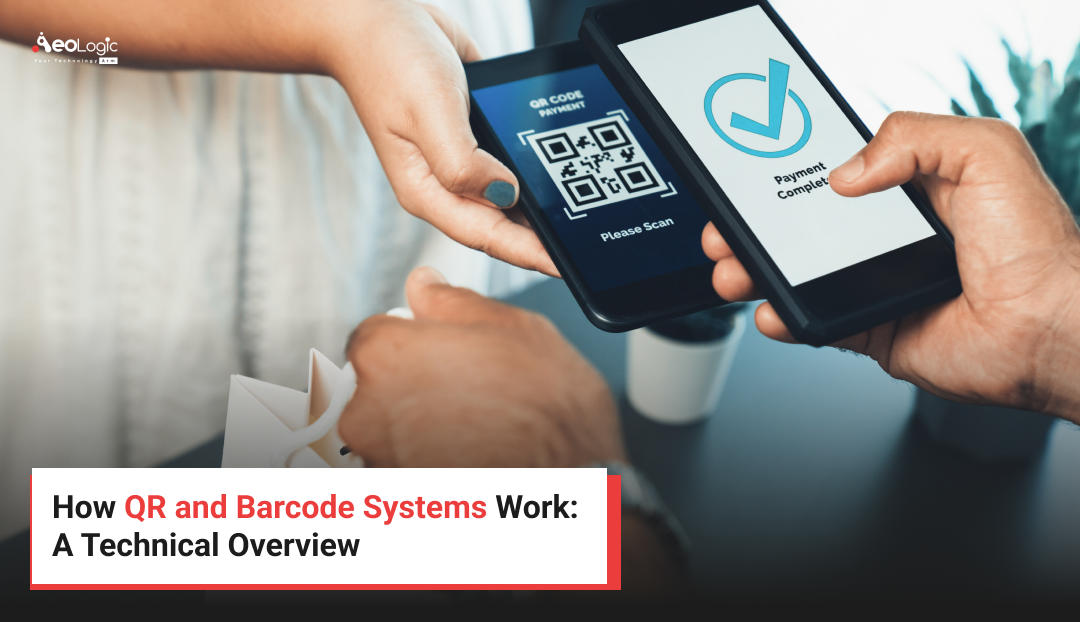Mobile applications have become an essential part of the digital ecosystem. From shopping and banking to healthcare and education, every industry is relying on mobile apps to connect with customers and enhance business operations. With increasing competition and rapid technological change, companies are focusing on building mobile apps that are fast, secure, and user-friendly. However, before starting the development process, understanding the Cost of Mobile App Development is crucial. In 2025, this cost depends on several factors like app complexity, design, features, platform, and location of the development team. Businesses are also adopting advanced technologies such as AI, AR/VR, and blockchain, which further influence the overall budget.
Knowing how these factors affect cost helps organizations plan better, manage resources effectively, and ensure timely delivery. Let’s explore the complete breakdown of mobile app development costs in 2025 and understand what drives these figures.
Overview of the Mobile App Market in 2025
The global mobile app industry continues to grow at a strong pace. In 2025, the mobile app market is expected to reach around USD 756 billion, growing at a CAGR of nearly 13% from 2024 to 2030. This growth is being driven by the increasing use of smartphones, 5G adoption, and the rise of digital-first businesses.
More than 80% of enterprises now have mobile apps as part of their digital strategy. Industries like healthcare, finance, retail, and logistics are heavily investing in customized applications to improve engagement and streamline operations.
The demand for cross-platform apps built using frameworks like Flutter and React Native has also increased, as businesses seek faster deployment and lower costs. Emerging technologies such as AI-powered chatbots, IoT integration, and AR-based experiences are adding new value but also impacting the Cost of Mobile App Development significantly.
Overall, 2025 is a year where the balance between innovation and cost efficiency will shape the mobile app landscape globally.
Key Factors Affecting the Cost of Mobile App Development
Understanding what affects the cost is important for making informed financial decisions. Below are the main factors that influence the Cost of Mobile App Development in 2025.
1. App Complexity and Features
The more complex the app, the higher the development cost. A basic app with simple features like login, profile management, and notifications can cost significantly less than an advanced app with AI, real-time chat, payment integration, or augmented reality.
2. Platform Choice (iOS, Android, or Cross-Platform)
Developing an app for a single platform costs less than creating a cross-platform solution. However, with cross-platform frameworks improving rapidly, businesses now prefer hybrid development to reduce cost and reach more users.
3. Design and User Interface (UI/UX)
App design plays an important role in user experience. A visually appealing and intuitive design requires more time and expertise, which adds to the total cost. High-end UI/UX with animations and custom illustrations increases both design and development efforts.
4. Development Team Location
The location of the development team affects the Cost of Mobile App Development significantly. Developers in North America or Western Europe generally charge more than those in Asia or Eastern Europe. Outsourcing remains a popular option for companies looking to manage budgets effectively.
5. Technology Stack
The tools and technologies used also influence cost. Apps using AI, machine learning, blockchain, or IoT integrations require more specialized skills and longer development time.
6. Maintenance and Updates
The cost doesn’t end with the app launch. Regular updates, bug fixes, and performance improvements add to ongoing expenses. Maintenance typically costs around 15–20% of the initial app development cost annually.
Cost Breakdown Based on App Type
Different types of apps require different resources and technologies, which leads to varying costs. Here’s a breakdown of estimated Cost of Mobile App Development based on common app categories in 2025.
1. Basic Apps
These include simple informational or utility apps with minimal features. Development usually takes 2–3 months.
Estimated Cost: USD 10,000 – 25,000
2. E-Commerce Apps
E-commerce applications require product management, payment integration, and user authentication systems.
Estimated Cost: USD 40,000 – 150,000
3. On-Demand Apps
Apps like food delivery, cab booking, or home services involve real-time tracking and multiple interfaces (user, provider, admin).
Estimated Cost: USD 60,000 – 200,000
4. Social Media Apps
Social networking apps with chat, media uploads, and live-streaming features require high scalability and strong backend support.
Estimated Cost: USD 80,000 – 250,000
5. Enterprise Apps
These are internal business applications designed for operations, HR, or inventory management. They focus on data security and integration with other enterprise systems.
Estimated Cost: USD 100,000 – 400,000
6. Gaming Apps
Game apps vary widely in cost depending on complexity, 3D graphics, and features.
Estimated Cost: USD 50,000 – 500,000+
Average Development Cost by Region
The cost of mobile app development varies significantly depending on the region and expertise of the developers. In 2025, global pricing trends reflect the ongoing demand for skilled professionals and regional cost advantages.
1. North America (USA and Canada)
North America remains one of the most expensive regions for app development due to high labor and operational costs. However, it offers unmatched quality, innovation, and strong data security compliance.
Estimated Cost: USD 100 – 180 per hour
Average Total Project Cost: USD 80,000 – 350,000
2. Western Europe (UK, Germany, France)
European developers maintain high-quality standards with a balance of creativity and precision. These markets focus heavily on design and compliance, especially for fintech and healthcare apps.
Estimated Cost: USD 70 – 150 per hour
Average Total Project Cost: USD 60,000 – 250,000
3. Eastern Europe (Poland, Ukraine, Romania)
Eastern Europe is becoming a hub for affordable, high-quality app development. Skilled developers in this region offer reliable solutions at competitive prices.
Estimated Cost: USD 40 – 80 per hour
Average Total Project Cost: USD 30,000 – 150,000
4. Asia (India, Vietnam, Philippines)
Asia, particularly India, remains a leading choice for outsourcing app development. The region offers large talent pools, technical expertise, and cost-effective pricing without compromising quality.
Estimated Cost: USD 20 – 50 per hour
Average Total Project Cost: USD 10,000 – 80,000
5. Australia and New Zealand
Australia offers premium development services for enterprises seeking advanced app solutions. Though the cost is higher, the quality and delivery speed justify the investment.
Estimated Cost: USD 70 – 130 per hour
Average Total Project Cost: USD 60,000 – 200,000
Additional Costs to Consider
Beyond development, several additional expenses contribute to the overall Cost of Mobile App Development in 2025. These are often overlooked during initial budgeting but play a crucial role in long-term success.
1. App Hosting and Infrastructure
Apps require reliable hosting servers to handle traffic, storage, and data processing. Cloud services like AWS, Google Cloud, and Azure charge based on bandwidth and usage.
Estimated Annual Cost: USD 1,000 – 10,000
2. App Store Fees
To publish an app, developers must pay platform fees. Apple App Store charges USD 99 per year, while Google Play requires a one-time fee of USD 25.
3. Marketing and User Acquisition
Once the app is launched, marketing is essential to gain visibility. Costs depend on campaign reach, advertising channels, and target audience.
Estimated Cost: USD 5,000 – 50,000
4. Maintenance and Support
Regular updates, bug fixes, and new features ensure smooth performance. Businesses typically allocate 15–20% of their annual app budget for maintenance.
5. Third-Party Integrations
Many apps use third-party APIs such as payment gateways, maps, or analytics tools. Each integration adds cost based on usage fees and licensing requirements.
Cost Optimization Strategies
While the Cost of Mobile App Development can seem high, there are effective ways to manage and reduce it without compromising quality.
1. Define Clear Requirements
Unclear goals or changing features often lead to budget overruns. A detailed requirement document helps the development team estimate cost and time more accurately.
2. Start with an MVP
A Minimum Viable Product (MVP) allows you to launch faster with essential features and gather real user feedback. It reduces risk and helps prioritize future investments.
3. Use Cross-Platform Frameworks
Frameworks like Flutter and React Native allow a single codebase for both iOS and Android. This reduces development time and saves up to 40% in cost.
4. Outsource to Skilled Regions
Hiring developers from cost-efficient countries like India or Eastern Europe can significantly reduce expenses while maintaining quality.
5. Adopt Agile Development
Agile methodology focuses on iterative progress and flexibility. It helps identify issues early and reduces unnecessary rework.
6. Optimize UI/UX Design
While design is important, overly complex visuals increase time and cost. A simple, intuitive design enhances usability and keeps expenses manageable.
Future Trends Impacting Mobile App Development Cost
The mobile app landscape in 2025 is evolving with several technological advancements. These trends are redefining both functionality and the Cost of Mobile App Development globally.
1. Artificial Intelligence (AI) and Machine Learning
AI and ML are now integral to apps that deliver personalized experiences and predictive insights. However, integrating AI-driven features like chatbots or recommendation systems increases development time and costs.
2. Internet of Things (IoT) Integration
IoT-based mobile apps for smart homes, healthcare devices, and logistics require hardware connectivity and real-time synchronization. These add complexity to the backend and raise overall development costs.
3. Augmented Reality (AR) and Virtual Reality (VR)
AR and VR are enhancing user engagement in gaming, retail, and education. While they offer unique experiences, 3D modeling and performance optimization contribute to higher expenses.
4. Blockchain-Powered Apps
Blockchain ensures secure transactions and transparency. Apps using blockchain for payment, logistics, or data storage require specialized developers, which increases total costs.
5. 5G and Edge Computing
The rise of 5G networks enables faster, more responsive apps. However, building apps optimized for 5G infrastructure involves additional testing and adaptation, slightly affecting development budgets.
6. Voice Recognition and Natural Language Processing
Voice-enabled features like digital assistants add new layers of AI complexity. The cost varies depending on language support, data processing, and integration APIs.
7. Cloud-Native Development
Cloud-native apps offer scalability and performance efficiency. Although cloud migration adds initial cost, it reduces long-term maintenance expenses.
Conclusion
Mobile app development continues to be a major investment for businesses worldwide. The Cost of Mobile App Development in 2025 depends on app type, complexity, location, and chosen technology stack. While new innovations like AI, AR, and blockchain are increasing costs, they also create opportunities for enhanced performance and customer engagement.
For startups and enterprises alike, understanding the cost structure helps in building realistic budgets and achieving long-term growth. Choosing experienced developers, defining clear goals, and adopting cross-platform solutions can greatly reduce expenses.
In 2025, companies that invest wisely in mobile app development will not only save costs but also gain a strong competitive edge in the digital market.
FAQs
1. What is the average Cost of Mobile App Development in 2025?
The average cost ranges from USD 30,000 to 250,000 depending on complexity, features, and development region.
2. Which factors affect the Cost of Mobile App Development the most?
App complexity, design, technology stack, and developer location are the key factors influencing cost.
3. Is it cheaper to build an iOS or Android app?
Generally, iOS apps cost slightly more due to design standards and testing requirements, but the difference is narrowing with cross-platform tools.
4. How can businesses reduce mobile app development costs?
Using cross-platform frameworks, outsourcing, and starting with an MVP are effective ways to manage costs efficiently.
5. What technologies increase app development costs in 2025?
AI, AR/VR, IoT, and blockchain integrations add complexity and increase the overall cost of development.

Passionate about breaking down complex tech into simple ideas. Covers everything from AI and software development to gadgets and emerging tech trends.







